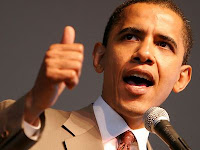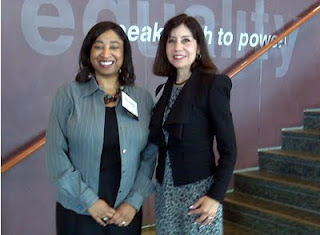Sunday night we watched the Golden Globe awards spiral downward into a verbal slapfest. Ricky Gervais, the emcee for the evening, pushed the envelope and went beyond edgy to offensive. A comedian is supposed to be funny, witty, and a little risque. However, as a public speaker, Gervais seemed to be oblivious to the fact that he was speaking in public. Rather than being funny, his comments and barbs were insulting and at times downright mean. Although others may disagree, an awards ceremony should honor the winners while using wit and humor to poke fun at the recipients and film industry. Think Billy Crystal. What makes the commentary funny is that there is a kernel of truth in the joke which makes the audience laugh. When introducing actor Robert Downey Jr, Gervais said, "But many of you in this room probably know him best from such facilities as the Betty Ford Clinic and Los Angeles County Jail." Ouch. As a listener, it didn't feel good and it didn't make me laugh. It felt like an attack. The real humor was missing because the comments lacked a lightness.
Downey shot back, "Aside from the fact that it's been hugely mean-spirited with mildly sinister undertones, I'd say the vibe of the show has been pretty good so far, wouldn't you?" As a coach, I must say that this was a good comeback. It was quick, clever, and he acknowledged the elephant in the room. I've attended roasts at the Friar's Club in New York City and they can be brutal. But one thing is different. Most of the jokes are funny and there's a lot of laughter. When hosting an awards ceremony or even a roast, it's not about the emcee. It's about the honorees.
Gervais was not alone in his bad behavior. After accepting the Cecil B. DeMille award, Robert De Niro hurled a zinger at the foreign press. " I'm sorry more members of the Hollywood Foreign Press aren't with us tonight, but most of them got deported right before the show. Along with most of the waiters. And Javier Bardem." De Niro was not gracious. This kind of poor judgment is exactly the kind of communication that causes people to lose their jobs. As a public speaker, your presentation is your brand. And your words will live on long after you exit the stage.

 Make this your best year. Start by polishing your presentation and communication skills. Resolve to follow these eleven speaking principles to speak with greater impact.
Make this your best year. Start by polishing your presentation and communication skills. Resolve to follow these eleven speaking principles to speak with greater impact.







 Marketers, Take Note: Passion Sells
Marketers, Take Note: Passion Sells
 Jeannette Paladino, author of the blog,
Jeannette Paladino, author of the blog, 



 The other day I was on my way to Hilton Head South Carolina.
I boarded the airline which was on time. I sat back in my seat awaiting the usual safety drill. The attendant ended the announcement with "This is a no smoking no complaining flight. If you complain you'll be the entertainment - outside gone with the wind."
The other day I was on my way to Hilton Head South Carolina.
I boarded the airline which was on time. I sat back in my seat awaiting the usual safety drill. The attendant ended the announcement with "This is a no smoking no complaining flight. If you complain you'll be the entertainment - outside gone with the wind." There was a popular song years ago that went " Who let the dogs out?" And that's a question that's apropos this week in the media. The answer is President Obama let the dogs out in his recent speech in Milwaukee. Alluding to his opponents he said, 'They're talking about me like a dog." What does this tell us? Language reflects thought. While some studies state that words are only 7 per cent of the message, words are powerful. They give us insight into what the speaker believes and feels. In this case, Obama is saying he feels like a victim. The key is the wording "They're talking about ME". It's something that is happening to him. It's not the language of leadership. There is a difference between being genuine and appearing weak.
Former Mayor Giuliani showed genuine sadness during the bombing of the World Trade Center but he never spoke like a victim.
There was a popular song years ago that went " Who let the dogs out?" And that's a question that's apropos this week in the media. The answer is President Obama let the dogs out in his recent speech in Milwaukee. Alluding to his opponents he said, 'They're talking about me like a dog." What does this tell us? Language reflects thought. While some studies state that words are only 7 per cent of the message, words are powerful. They give us insight into what the speaker believes and feels. In this case, Obama is saying he feels like a victim. The key is the wording "They're talking about ME". It's something that is happening to him. It's not the language of leadership. There is a difference between being genuine and appearing weak.
Former Mayor Giuliani showed genuine sadness during the bombing of the World Trade Center but he never spoke like a victim.